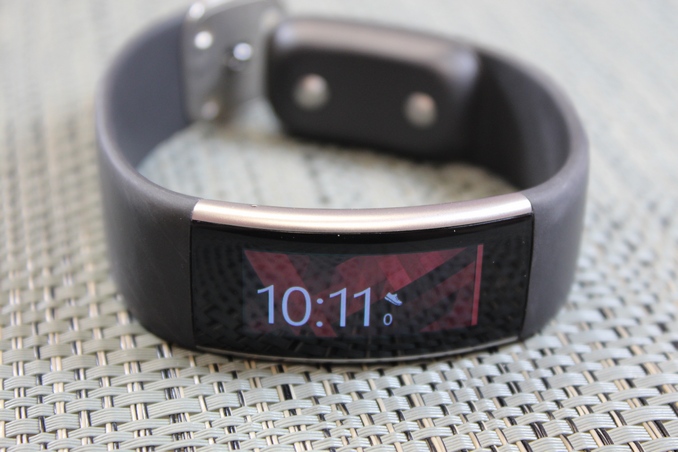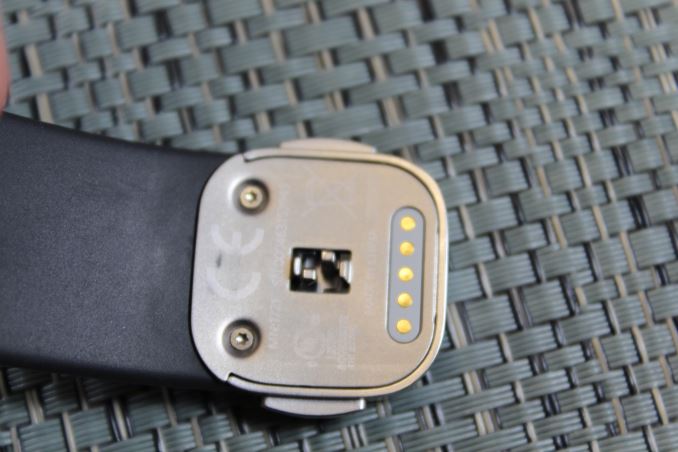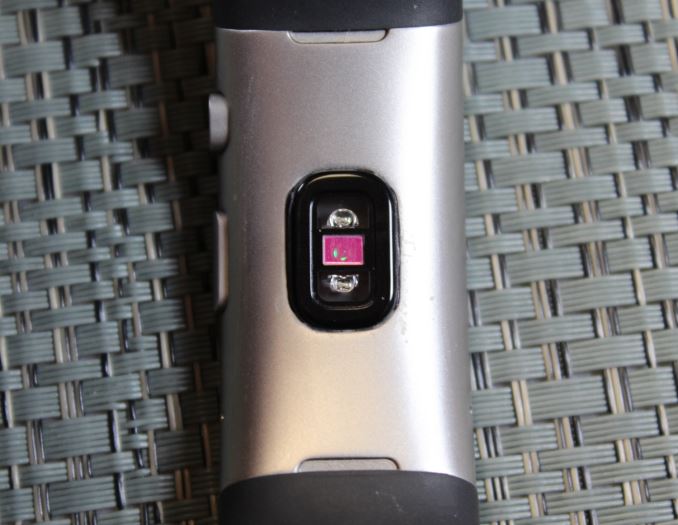The Microsoft Band 2 Review
by Brett Howse on November 30, 2015 8:00 AM EST- Posted in
- Wearables
- Microsoft
- Microsoft Health
- Microsoft Band

At the end of October in 2014, Microsoft surprisingly released a late night press release about a new device they were launching. It was the Microsoft Band, which is a fitness wearable that was a key component of their Microsoft Health service. It was their first real wearable, and it was packed with sensors to track everything from your heart rate to your sleep quality. At the Microsoft devices event in NYC on October 6th, Microsoft announced an updated version of the Band, known as Band 2. Its goal is to provide even more health insights, while being more comfortable and stylish than the original Band.
The first obvious question though is what the Microsoft Band actually is. In a time of everything from step counters to smart watches, where does the Band 2 (which will be called Band from here on out) fit in. Apple has the Apple Watch, Google has Android Wear, and Microsoft has the Band. But it’s not really a smartwatch, although it does do some of the things a smartwatch can do. It’s more than just a fitness band as well - it straddles the line of a 'smart fitness' band. You can do some of the things that a smartwatch can do, but not all, and it can do more things than most fitness bands. Like the Surface Pro 4 is a tablet that can replace your laptop, the Microsoft Band is a fitness band that can replace your smartwatch, except most probably do not have a smartwatch yet.
Design
The Band 2 makes some significant changes from the original, with the goal of a better fit, comfort, and improved ergonomics. It features a curved AMOLED display, which has a resolution of 320x128. This is a big improvement over the original band which had a flat display, and the new one does a much better job of fitting around your wrist than the original Band. Another nice change from the original band is that the entire display and surrounding bezel is now covered by Corning Gorilla Glass, which should alleviate the scratching that occurred on the original Band. Microsoft let me know that complaints of scratching on the display was almost always plastic bezels around the display, so the glass has been extended all the way to the edges as a result. The housing of the Band is now finished in silver metal, and keeps just two buttons on the side for actionable items. The large button in the center is power, and the smaller button on the side is the action button.
Another improvement over the original Band are the straps on the sides. On the first generation, Microsoft actually fitted the two 100 mAh batteries into the straps on the side, which made them kind of stiff, which is no longer the case this time around. In addition, the strap material is now a new material - a thermal plastic elastomer, silicone vulcanite. As with many materials, is comes across as a lot of big words, but the strap is a very smooth silicone rubber, and it doesn’t seem to get affected by sweat and oils on your arm. The clasp itself has not changed much, but it has the same silver finish as the main housing, and the battery has been moved to the lower half of the clasp. The upper clasp features a UV sensor, and the charging pins.
I feel like the design has come a long way from the original Band. The new curved display is the most obvious change, but the other design changes have also improved the overall look and especially feel of the Band on your wrist. The clasp is still fairly large, which might be an issue for some people. It would be nice to see a thinner clasp mechanism on a future version, although as this is where the battery is housed it may not be possible for a while.
| Microsoft Band Specifications | |||
| Microsoft Band 2 (2015) | Microsoft Band (2014) | ||
| Band | Thermal plastic elastomer silicone vulcanite with adjustable-fit clasp | Thermoplastic elastomer with adjustable-fit clasp | |
| Display | 12.8mm x 32mm AMOLED 320 x 128 pixels |
11mm x 33mm TFT 320 x 106 pixels |
|
| Sensors | Optical heart rate sensor 3-axis accelerometer/gyro Gyrometer GPS Ambient light sensor UV sensor Skin temperature sensor Capacitive sensor Galvanic skin response sensor Barometer |
Optical heart rate sensor 3-axis accelerometer/gyro Gyrometer GPS Ambient light sensor UV sensor Skin temperature sensor Capacitive sensor Galvanic skin response sensor |
|
| Additional Technology |
Microphone Haptic vibration Motor |
Microphone Haptic vibration Motor |
|
| Connectivity | Bluetooth 4.0 LE | Bluetooth 4.0 LE | |
| Compatibility | Windows Phone 8.1 Update, with Bluetooth 4.0 iOS 8.1.2 or later: iPhone: 4S, 5, 5C, 5S, 6, 6 Plus Many Android 4.3 – 5.0+ phones with Bluetooth |
Windows Phone 8.1 Update, with Bluetooth 4.0 iOS 7.1 or later: iPhone: 4S, 5, 5C, 5S, 6, 6 Plus Many Android 4.3 – 5.0+ phones with Bluetooth |
|
| Battery | Lithium-Polymer 48 hours | Dual 100mAh Lithium-Ion polymer 48 hours |
|
| Environment | Dust/Water | Dust and splash resistant | Dust and splash resistant |
| Temperature | 14°F to 104°F (-10°C to 40°C) |
14°F to 104°F (-10°C to 40°C) |
|
| Altitude | -300m to +4877m | 1200m | |
| Launch Price | $249 USD | $199 USD | |
The new Band has even added to the sensor total, with a barometer now available, serviced by a small hole in the side of the Band. Due to the holes for the barometer and microphone, the Band is not waterproof, although it is rated as water resistant. Internally, the holes have a fine mesh cloth which is fine enough to not let water through during temporary mild wet weather, but this is not enough protection for immersion such as swimming.
The Band itself is powered by a Cortex M4 processor. One would expect it might run Windows 10 IoT, at least with this version, but they still need a bit more power before they will move it to Windows 10, which is something to look for in the future. The UI is a custom specifically for the Band though, influenced by Windows 10 in its look and feel.













56 Comments
View All Comments
jasonelmore - Monday, November 30, 2015 - link
$199?!?!?ok man, buy another smart watch with all that stuff
phoenix_rizzen - Monday, November 30, 2015 - link
Band 1 is $199. Band 2 is $249. This is definitely in the expensive range of fitness trackers.dsraa - Monday, November 30, 2015 - link
That is definietly a typo!! Since they released the Band 2, they dropped the price of the original to $99. And right now, due to holiday pricing, its $79.So go fix it......mis-information central.
Ratman6161 - Tuesday, December 1, 2015 - link
He was talking release prices...not what you could buy it for now. Anyone that wants to can do what I just did in about 10 seconds which is to typ "microsoft ban" in the search bar on Amazon.com and see $105 for the band and $249 for the band 2.This is the same with all electronic devices...prices drop over time and as soon as the "new and improved" or "Version 2.0" comes out, the original goes on the (virtual) discount rack.
Samus - Tuesday, December 1, 2015 - link
I don't know, I agree. At $250, you get basically all the same stuff in the Apple Watch for $350, which is far more featured. Healthkit is also much more advanced than Microsoft's Health SDK.etherlore - Thursday, December 3, 2015 - link
The lack of GPS in the apple watch makes it useless for running or cycling.Qwertilot - Monday, November 30, 2015 - link
Not sure about this for hiking - the big thing wearables can do for that is navigational information and the screen shape is just wrong for that vs a smart watch. Also I suspect its better to take the GPS battery load on the phone when you're out for 8+ hours.Does look pretty though :)
NesuD - Monday, November 30, 2015 - link
As far as I can tell on mine the gps is meant strictly for tracking rides and runs. I don't believe it was ever intended to be for navigating. I don't really know why anyone would think of using it that way. It has never been pitched that way.Ratman6161 - Tuesday, December 1, 2015 - link
I'd be curious to see what the battery life looks like on longer duration activities. I'm a cycling enthusiast and would really like something that could be using the GPS for 8 hours. A more typical ride for me would be 2 to 3 hours but I'm curious if it would be usable for the occasional century ride (6 - 7 hours).Zizy - Monday, November 30, 2015 - link
I read elsewhere that sleep tracking actually works without any manual parts - it senses when you sleep, so it should appear on their Health stuff even when you don't manually enable/disable it.Nice review, I especially like the comments about notifications, which seem like a missed opportunity to enable the best of both worlds.
But I miss more in-depth battery review with various sports. Will it survive night sleep tracking, entire work day and evening exercise with GPS (run/bike)? As smartwatch functionality is (currently?) a missed opportunity, majority of people interested in the device will care for the fitness part... but battery life there isn't tested - your scenario is mostly a smartwatch oriented test.